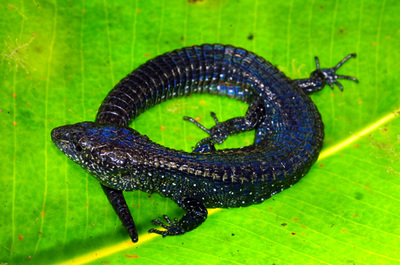We are heading to the Cordillera de Carabaya in the department of Puno. We will be exploring the surrounding of an abandoned mine. You can read more about some fascinating bits of history of this mine here. As for Ukumari Llaqta, you can follow updates from the satellite messenger posted on www.twitter.com/acatenazzi.
|
For our next expedition, we are following the footsteps or H. H. Keays who collected in southeastern Peru in the 19th century. Much of this material was sent to the British Museum (where it is still preserved, although time has taken its toll on amphibian specimens) where it is now type material for several species distributed in the eastern slopes of the Andes. Collecting fresh material and taking photographs of live specimens, in addition to the opportunity of collecting tissues for molecular analyses will help resolve some taxonomic issues in several groups -- that is, if we can find those frog and toad species again (chytrid fungus has likely caused the demise of several species).
We are heading to the Cordillera de Carabaya in the department of Puno. We will be exploring the surrounding of an abandoned mine. You can read more about some fascinating bits of history of this mine here. As for Ukumari Llaqta, you can follow updates from the satellite messenger posted on www.twitter.com/acatenazzi.
0 Comments
 A quick and mostly photographic preview of our last hike to Ukumari Llaqta, organized with the Peruvian NGO Asociacion para la Conservacion de la Cuenca Amazonica. Descriptive text will follow soon, but we are leaving for our next expedition in a couple of hours (see the next post!). A big thank to the Qeros communities who granted us access to their conservation area and some spectacular Andean landscapes, and especially to our guides Juan Marcos and Daniel Samata H. and Juan Samata A.  Alex watching clouds rise up from the Amazon  Our camp by the Qespillumayo river, as seen from the forest where we discovered a new species of small moss Andean frog.  A lab contribution published last week investigates the ecological implications of metabolic resilience at cold temperatures for salamanders. This research combined field measurements of environmental and body temperatures of field active European fire salamanders, including of animals walking on snow (see pictures and video) taken with infrared cameras, with laboratory measurements of heart rate (a proxy for aerobic metabolism) dependency on body temperature. Salamanders were only active at low to moderate temperatures not exceeding 16C, and although heart rate initially decreased linearly as temperatures were lowered, starting at 8C such rate of decrease became increasingly smaller such that at near freezing temperatures salamanders still had heart rates similar to those recorded at body temperatures of 6-8C. Winters, when fire salamanders are mostly active, are becoming warmer and shorter, and the increasing number of days of above-freezing temperatures will allow greater opportunities for field activity - and thus greater energetic demands for these animals.
|
Archives
June 2024
CATENAZZI LABNews from the lab Categories |






















 RSS Feed
RSS Feed